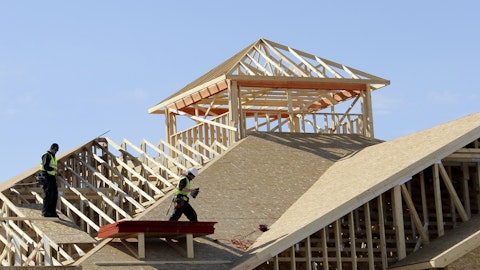The company’s net debt / EBIT ratio is also strong at 2.1x. This means that LOW’s could eliminate its debt with cash on hand and just 2.1 years of EBIT.
To conclude, LOW’s dividend payment is very safe and appears well positioned for many years of growth ahead.
Dividend Growth Score
Our Growth Score answers the question, “How fast is the dividend likely to grow?” It considers many of the same fundamental factors as the Safety Score but places more weight on growth-centric metrics like sales and earnings growth and payout ratios. Scores of 50 are average, 75 or higher is very good, and 25 or lower is considered weak.
LOW scored a very strong dividend Growth Score of 96, suggesting that its dividend has some of the highest growth potential that investors can find. The company’s low payout ratio, reasonable balance sheet, and strong cash flow generation support its score.
LOW has increased its dividend for more than 50 consecutive years and most recently raised its dividend by 22% earlier this year. The stock is one of 51 dividend aristocrats and has grown its dividend by nearly 20% per year over the last five years. We expect double-digit dividend growth to continue over at least the next 3-5 years.

Source: Simply Safe Dividends
Valuation
Lowe’s Companies, Inc. (NYSE:LOW) trades at 23x forward earnings and offers a dividend yield of 1.5%, which is slightly below its five year average dividend yield of 1.6%. LOW’s dividend yield is too low for investors living off dividends in retirement, but its long-term dividend growth potential is very strong.
From a total return perspective, we believe LOW could generate 8-12% annual earnings growth over the next five years. When combined with the stock’s current dividend yield, LOW’s stock could return 10-14% per year.
However, we think LOW’s earnings multiple already bakes in a decent amount of earnings growth and would prefer to buy the stock at an earnings multiple no higher than 20x.
While we see fundamental factors that could continue driving LOW higher over the next few years (e.g. aging homes, more baby boomers investing in their properties), it’s hard for us to get too excited about the stock at today’s price.
Conclusion
LOW’s is a high quality home improvement retailer with numerous competitive advantages. The company is benefiting from a mix of company-specific actions to improve profitability and macro tailwinds that are helping the housing market.
We believe the company’s dividend growth potential is very attractive given LOW’s conservative payout ratios, decent earnings growth potential, and reasonable balance sheet, but it’s hard to justify the stock’s current multiple. The stock is worth keeping on the watch list, but we prefer other blue chip dividend stocks at this time.
Disclosure: None





